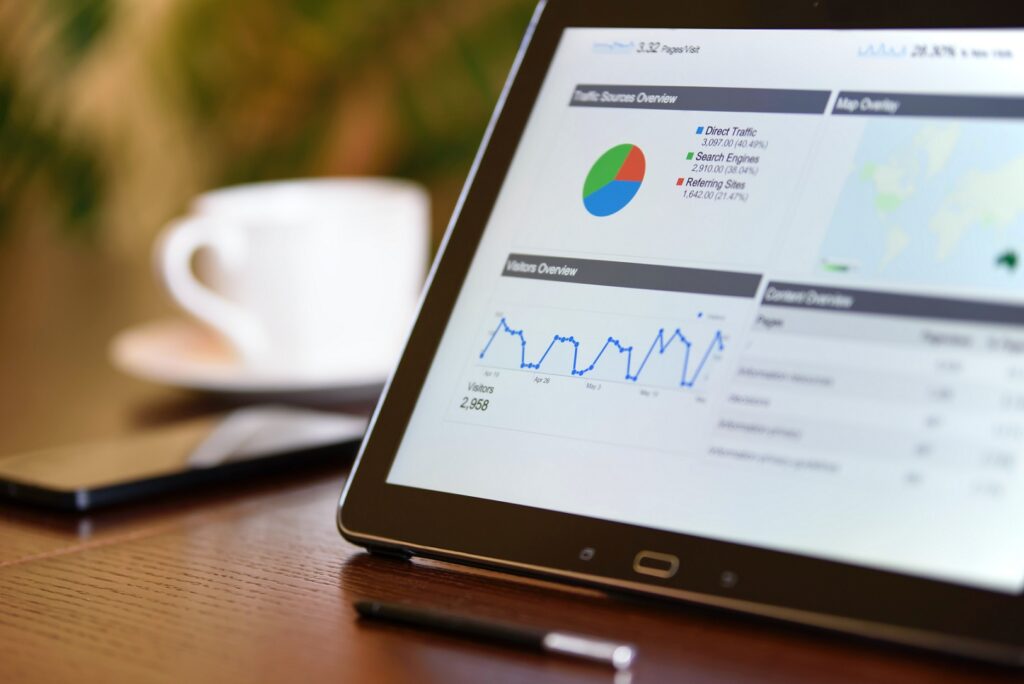Are you looking to find your way in the world of online advertising? Have you heard about Google Ads but don’t know where to start? We’ve got you covered! In this comprehensive guide, we’ll help take you from a total beginner up to being an online advertising pro. You’ll learn everything there is to know about setting up and using Google Ads, along with helpful tips and best practices so that no matter what your budget or goals are, you can make sure your ad campaigns deliver results. From getting started and understanding account setup basics to creative strategies for reaching potential customers – let us be your guide while navigating through the world of digital marketing on Google!
What is Google Ads and how it works
Google Ads is a powerful advertising tool that allows businesses to reach their target audience where they spend the most time – online. With over 246 million unique visitors every month, Google leads the pack in search engines, making it an ideal platform for businesses to showcase their products and services. Google Ads works by allowing advertisers to bid on specific keywords associated with their business. Then, when someone searches for those keywords, the advertiser’s ad will appear, helping to get their brand in front of potential customers. Additionally, Google Ads allows businesses to tailor their ads to specific demographics, locations, interests, and more, ensuring that their ads are shown to the right people at the right time. Whether you’re a small start-up or a large corporation, with Google Ads, you can reach your target audience, increase your online visibility, and grow your business.

Setting up your first campaign – targeting objectives, budgeting, ad types
Are you ready to launch your first campaign? The key to success lies in setting clear targeting objectives, carefully budgeting your resources, and choosing the right ad types for your business. When it comes to targeting, start by defining your ideal customer profile and tailor your campaign settings to reach this audience. Setting a tight budget can help you manage your spending and ensure that your money is being used effectively. And when it comes to ad types, choose the format that best suits your goals – whether it’s video, display, or search ads. With these key elements in place, you’ll be on your way to launching a successful campaign.
Optimizing your ads – keywords, negative keywords, copywriting, bidding strategies
When it comes to advertising, the goal is always to optimize your ads to ensure the most bang for your buck. A few essential components to consider in the optimization process are keywords, negative keywords, copywriting, and bidding strategies. Keyword research can help you determine the most relevant words or phrases that potential customers are using to find products or services similar to yours. On the other hand, negative keywords allow you to eliminate irrelevant searches that are unrelated to your product or service. Copywriting is essential to attract your audience and persuade them to take action. Meanwhile, having the right bidding strategy ensures that you’re getting the best value for money on your advertising spend. By focusing on these key areas and constantly tweaking them to determine what works best for your business, you can maximize the effectiveness of your ads and generate more leads, conversions, and ultimately, revenue.
Understanding the metrics – impressions, clicks, cost-per-click (CPC), conversion rate
In the world of online advertising, metrics are everything. But tracking metrics is only part of the equation. Understanding them could mean the difference between success and failure. Impressions, clicks, cost-per-click (CPC), and conversion rate are some of the most important metrics to pay attention to. Impressions represent the number of times your ad is displayed, whereas clicks measure the number of times people click on your ad. CPC is the cost you pay per click on your ad. And finally, the conversion rate is the percentage of people who take the desired action after clicking on your ad. Knowing what each of these metrics means and how they work together can help you maximize your ROI and create winning ad campaigns.
Analyzing data to inform decisions – tracking conversions and costs per acquisition (CPA)
Analyzing data is the backbone of making informed decisions for any business. When it comes to tracking conversions and costs per acquisition (CPA), it becomes even more crucial to have data insights at your fingertips. By taking a deep dive into the analytics, you can identify which marketing channels are driving the best results and adjust your strategy accordingly to ensure you’re getting the best ROI. It’s all about knowing where to focus your efforts and identifying areas of opportunity to improve the overall performance of your business. Whether it’s through A/B testing, customer surveys, or data analysis, the key is to be proactive in tracking your metrics to keep your finger on the pulse of your business. By doing so, you can make data-driven decisions that will ultimately lead to business success.
Google Ads best practices – A/B testing, bid adjustments, remarketing campaigns
One of the most effective ways to maximise the success of your Google Ads campaigns is through A/B testing. By testing different variations of your ads, you can identify which ones perform best and make data-driven decisions to optimise your strategy. Additionally, bid adjustments can help improve your results by allowing you to increase or decrease your bids based on certain factors, such as device type or location. And don’t forget about the power of remarketing campaigns. By targeting users who have already interacted with your brand, you can increase conversions and boost brand loyalty. Incorporating these best practices into your Google Ads strategy can make a huge difference in your overall success.
Troubleshooting common problems – low click-through rates and high CPCs
As advertisers, we all want to see our click-through rates soar and our cost-per-clicks stay low. However, it’s not uncommon to face the frustrations of low click-through rates and high CPCs. But fear not, as troubleshooting these common problems can lead to a more successful advertising campaign. One way to improve click-through rates is to analyze and optimize ad copy and targeting. On the other hand, high CPCs can be tackled by bidding smarter and using negative keywords to prevent wasted spend. With a bit of effort and persistence, we can overcome these obstacles and achieve the advertising results we desire.

Advanced strategies for experienced users – automation rules and automated bidding strategies
As an experienced user, you already know the basics of automation rules and automated bidding strategies. But did you know that there are advanced strategies that can take your campaigns to the next level? By setting up custom labels for your products and using them in combination with automation rules, you can adjust bids based on specific product attributes such as price, stock levels, or profit margins. This way, you can maximize your ROI without wasting your budget on ineffective keywords or low-performing products. Additionally, you can experiment with different bidding strategies, such as target CPA or maximize conversions, to see which one works best for your campaign goals. With these advanced strategies at your disposal, you can stay ahead of the competition and achieve even greater success.
By now, you should be well-equipped with the skills and knowledge needed to create an effective Google Ads campaign. From learning how to set up your campaigns, targeting objectives, budgeting, ad types and optimizing your ads to understanding various metrics like cost-per-click, conversion rate and analyzing data from your campaigns, you now know what it takes to run successful Google Ads campaigns. Utilize best practices like A/B testing or bid adjustments to gain an edge over competitors. If you ever run into problems like low click-through rates or high CPCs, this blog post should get you on the right path. For experienced users looking for more advanced strategies, explore automation rules and automated bidding strategies as these can generate great results if implemented properly. To sum it all up – keep learning, and keep testing new techniques until you get the desired results! Start leveraging the power of Google Ads today and start watching your business grow.


